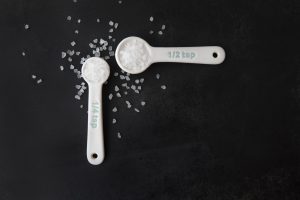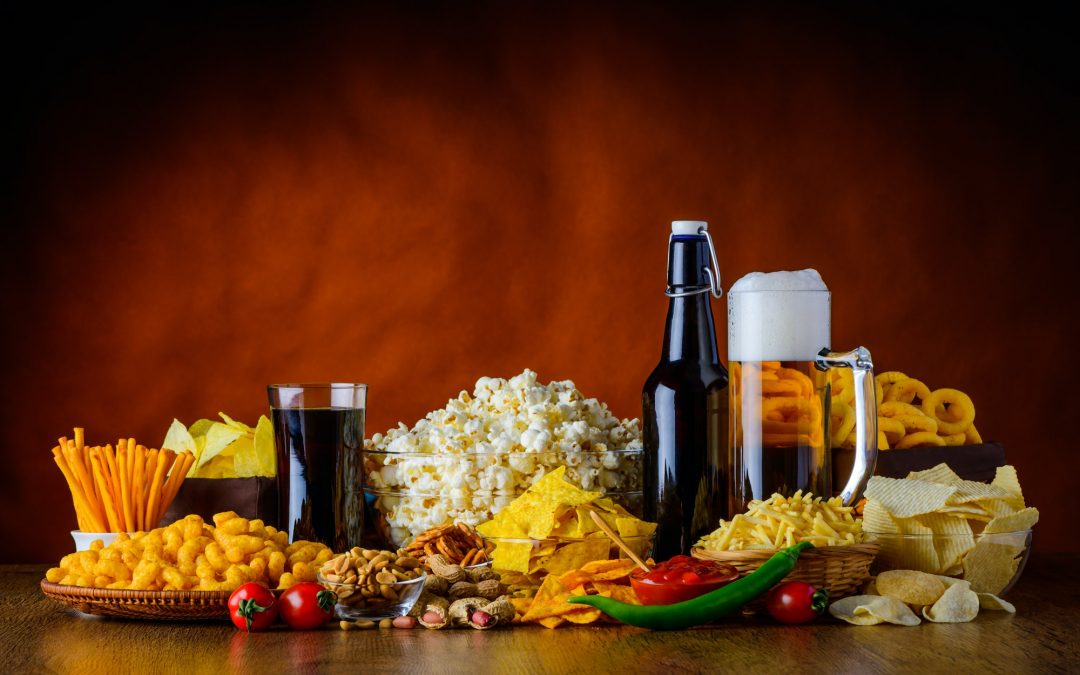Scientific research suggests that high sodium (salt) intake negatively affects your health. Learn how to eat less sodium with these quick tips.
American food is full of sodium, which shows as nine out of ten people consume more salt than they should. Unfortunately, eating more salt than you need can increase your risk of hypertension, heart attack, and stroke.
However, you can decrease your risk of hypertension (high blood pressure) by cutting down your salt intake. While adding less salt to your food may sound hard, it can be done if you follow these quick tips for eating less sodium.
 1. Know Your Limits
1. Know Your Limits
In general, healthy teens and adults should limit their daily sodium intake to a maximum of 2,300 milligrams (mg) per day. Moreover, those with hypertension should go even further and limit themselves to 1,500 mg max per day.
Anyone under the age of 14 should consume no more than 1,500-2,200 mg of sodium per day.
2. Eat Low-Sodium Foods
Avoiding the salt shakers is not enough when it comes to limiting sodium, as many foods come packed with it. Bread, tortillas, and other processed and prepared foods are full of sodium.
Avoid instant foods (e.g., flavored rice and noodles), deli meats, sausages, sardines, sauces, dressings, and condiments. In addition, you should opt for low-sodium alternatives, which you can find in this shopping list.
3. Read the Label
Each food item has a label on the back called “Nutrition Facts” which lets you know how much sodium the product contains. As you compare products, choose the ones that have 5% Daily Value or less and avoid those with 20% or more.
Fortunately, some low-sodium foods make it clear by having labels saying “reduced sodium,” “low sodium”, or “no salt added,” However, not all foods come with those labels, so check the “Nutrition Facts” just in case.
4. Use Substitutes
Instead of leaving your favorite salty foods behind for completely different dishes, choose their low-sodium substitutes instead. For example, instead of eating salted pretzels and chips, eat similar unsalted snacks like nuts.
Replace deli meats and sausages with lean meats, seafood, and skinless chicken or turkey. When eating vegetables, you can eat the frozen and canned kind, so long as they don’t come with sauce and are low in sodium.
5. Start Cooking
It’s harder to control the amount of sodium intake when most of your food is ready-made, so give cooking at home a shot. By making your own meals, you are in control of how much salt goes into your food and your body.
You can still use food in a can – just make sure to rinse it before eating or cooking to wash away some of the salt. Furthermore, you can use unsalted or low in sodium condiments and spreads.
Finally, you can replace salt with herbs and spices if you want to flavor your food without the sodium. Also avoid adding salt to your food once it’s ready to eat.
–
Eating less sodium is all about improving your heart health. If you’re interested in promoting your heart and circulation health, read these L-arginine Plus reviews to see if it can help you.

